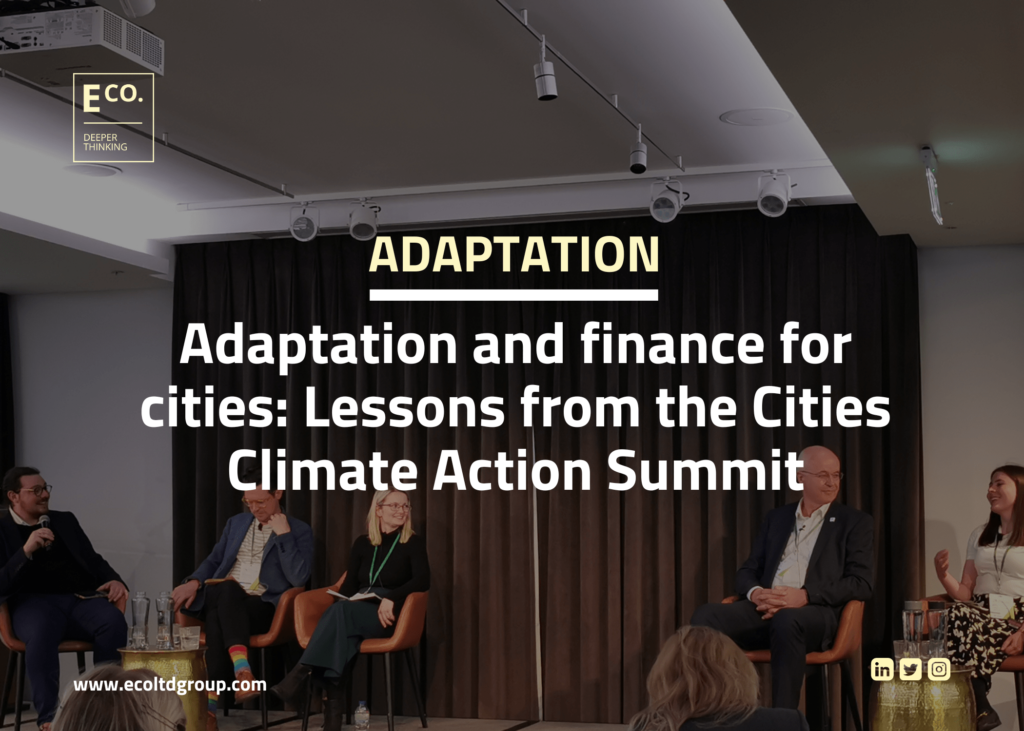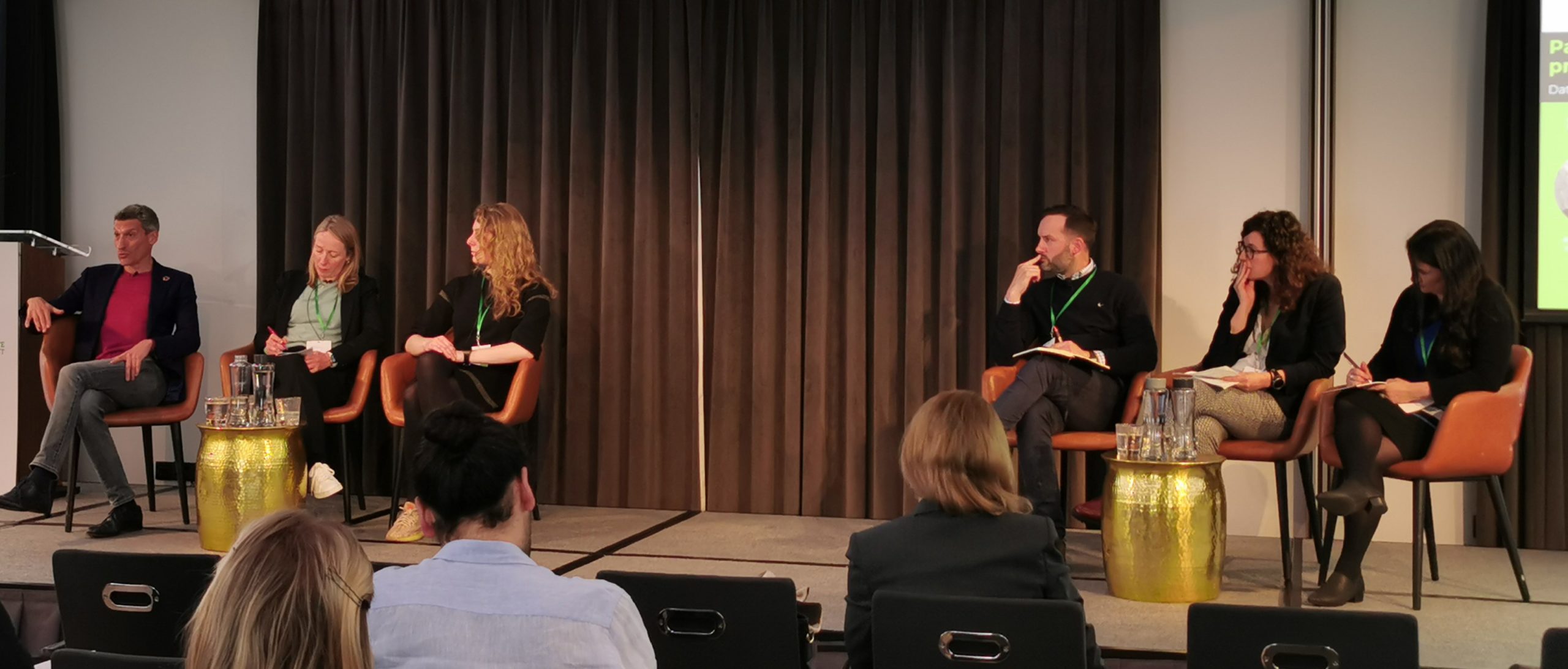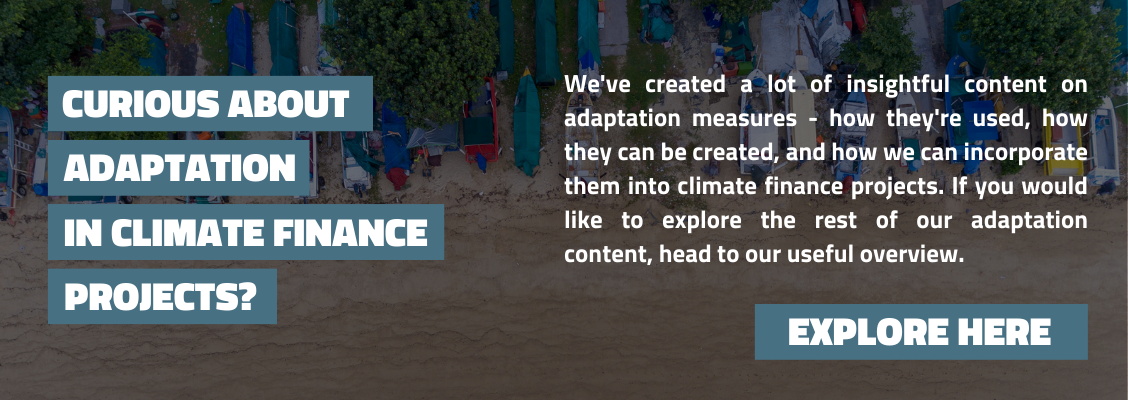Adaptation and finance for cities: Lessons from the Cities Climate Action Summit
21 April 2023, Category: All insights, News, Tags: adaptation, cities, climate change, climate finance, project design, sustainable development

By Jack Cribb
Securing fit-for-purpose adaptation in cities is vital for ensuring climate resilience. So too is finding adequate finance to back adaptation projects, sourced from both public and private sources. We attended the Cities Climate Action Summit (CCAS23) to learn more about how this can be done.
Held over three days, both online and in-person, by Smart Cities World, CCAS23 was held to help attendees understand actions in three key areas for securing climate resilience in cities; Policy development, climate financing, and technology deployment.
“We didn’t build the city for extreme weather.” stated Shirley Rodrigues, London Deputy Mayor for Environment and Energy, in the introductory speech of the in-person day. Rodrigues touches upon a pertinent realisation – The towns and cities of today, all across the globe, were not built with the ramifications of climate change in mind. This is why adaptation for cities is so important, as both the drivers of climate pledges (with 340 cities globally aiming for net-zero by 2030) and the homes of the majority of the world’s population. In light of this, CCAS23 led us to several key learnings:
- Adaptation solutions need to be holistically integrated, whether it’s the built environment, transportation, or how we talk to the public to prepare them for change.
- The private sector has a huge responsibility, not only for delivering finance, but to also hold national governments accountable.
- Climate finance projects are made bankable through the quality of their design and the successful articulation of their intrinsic benefits – especially for the private sector.
Adaptation solutions need to be holistically integrated
A key session in terms of adaptation was held on Tuesday, called ‘Building climate action around adaptation’ and featured:
- Jane Gilbert – Chief Heat Officer at Miami-Dade County
- Kit England – Senior Climate Adaptation Specialist at Paul Watkiss Associates
- Nancy Sutley – Deputy Mayor for Energy and Sustainability, City of Los Angeles
- Michael Lake – CEO, Leading Cities
This session focused on the need for building resilience, and the need for adaptation measures in relation to mitigation. There was an emphasis on the need for preparation, but preparation that didn’t pit adaptation against mitigation, which was seen as a ‘false trade-off’, with speakers noting the potential synergies between mitigation and adaptation measures, such as the replacement of sea walls with mangrove forests (within suitable areas).
The session continued with talk on the perceived friction between adaptation and mitigation, with Leading Cities’ Michael Lake stating, “This is not an ‘either/or’, but an ‘and/both’” situation. Currently, in the US, up to 90 cities are facing the threat of chronic flooding due to either sea-level rise or extreme weather events, which is an adaptation challenge, but without mitigation this will only get worse.
Another important point raised was the use of climate-proof adaptation measures and ensuring that the finance raised goes towards fit-for-purpose solutions. For example, the use of air conditioning was a point of contention. Evidently, AC is a useful tool in buildings, making hotter weather more liveable for city dwellers. However, it was argued that this could also be seen as ‘maladaptation’ if the ACs themselves are either:
- Not powered by renewable energy;
- Not built from sustainable materials;
- Unable to be repaired or recycled adequately, amongst other reasons.
Kit England called for the presence of ‘climate-smart decisions’, such as not retrofitting buildings with materials that potentially lock in future heating risks. Similarly, an acknowledgement of building capacity to understand just how bad scenarios could get, with the questions ‘Will cities be viable? Will cities be liveable?’ being raised.
Ultimately, several key points discussed in this session are vital considerations for adaptation practitioners:
The responsibility of the private sector to ‘hold feet to fire’
One of the most intriguing in-person sessions held on Wednesday 20th was entitled ‘Funding climate plans via public-private partnerships’, featuring:
- Dan Champion – Head of Investment Delivery Planning for Air Quality, Transport for London
- Jenny McInnes – MD, Group Head: Sustainability Policy & Partnerships, HSBC
- Andrea Fernandez – Managing Director, Climate Finance, C40 Cities
- Priscilla Negreiros – Head, Cities Climate Finance Leadership Alliance
- Emma Harvey-Smith – Programme Director, Green Finance Institute
For real change to occur, we need finance. Adaptation in cities not only requires the firm regulatory hand of both national and local authorities, but the innovation and funds that exist within the private sector. Are there ways of using public finance efficiently to leverage and attract private investment? Can boroughs and municipalities directly raise capital? If local authorities are to attract private investment in adaptation measures, there needs to be a change in narrative, effectively promoting the idea of city-based adaptation as a huge investment opportunity.
Adaptation in cities is, essentially, conditional on both finance and technical capacity. But efforts also need to be made to effectively de-risk adaptation projects for the private sector. Can concessional capital be utilised here? Can we design adaptation projects to better accommodate the disparate needs of private investors? Ultimately, adaptation practitioners need to answer both of these questions.
An important topic that was raised during this session was the issue of political will. How do we secure it, drive it, ensure that national governments don’t backslide on their climate promises? One answer was that the private sector has the financial capacity to essentially ‘hold the feet to the fire’, and that trailblazers of successful climate resilience projects (ones where private investment was granted) should set the agenda for national governments. As was said in this session, “Countries pledge, and cities deliver.”
In short, there were several learnings:
“Attending the Cities Climate Action Summit offered insight into the initiatives being taken for green sustainable cities and gave a platform to interact and question those behind the project/programme innovations. There are steps being taken in the field of data collection and analysis regarding digitalisation and smart cities. DRR (Disaster Risk Reduction) is a prominent topic in the UK and more so for LEDCs.
Sarah Hayes, the lead from CReDo, spoke on their CCA (climate change adaptation) Climate Resilience Demonstrator Digital Twin project. The talk offered insight on how a digital twin project provides a practical example of how connected data, shared across sector boundaries, can improve climate adaptation in a city. This design improves resilience across a ‘system of systems’ to mitigate the effects of climate hazards on a city.
One of the key takeaways from the event revolved around the idea of action from data. Organisations can collect data from ranging sources such as satellites to social media. This can be placed into multiple climate models and maps however there must be cooperation and next steps taken from the information gathered.” – Joshua White, Analyst
Bankable climate finance projects are the solution
Another useful online session was the session on ‘Climate financing and creating bankable projects’. featuring:
- Francisco Martes Porto Macedo – Senior Programme Associate, Cities Climate Finance Leadership Alliance
- Lauren Sorkin – Executive Director, Resilient Cities Network
- Jannika Aalto – Built Environment Program Manager, Green Digital Finance Alliance
Coming right out of the gate was the statement that there is huge evidence that private, commercial institutions are willing to invest in climate resilience projects, especially within cities. This is fantastic news for those working on adaptation and mitigation projects. However, while the private sector may be willing, they’re still incredibly risk-averse. A project needs to be immediately bankable before attracting private investors.
Projects are made bankable in several ways, but the one that came up several times was the idea of quality. A project’s design needs to represent an undeniable quality, constructed and delivered by several experts with a wide range of experience, and considering the myriad cross-cutting issues that an adaptation or mitigation project will naturally touch upon. Projects must include capacity-building, frequent feedback, collaboration, and fit-for-purpose analytical tools and techniques. Here at E Co., we believe projects must:
- Meet the needs of local people;
- Be appropriate for implementing agencies;
- Result in long-lasting benefits.
An interesting idea raised in this session was the concept of ‘bundling’ projects together, making them more bankable via association and promising a more significant return on investment for private sector entities. If you’ve experienced anything like this in your line of work, please get in touch and tell us all about it.
| Finally, one thing to remember is that a climate adaptation or mitigation project starts a long time before it is conceptualised within a city. What you truly need to be aware of is your baseline project inclusions; What are your targets? What are you up against? Do you have the human capacity to design and manage the project? Without answers to these questions, it’s business as usual. |
Curious about what adaptation and mitigation projects should include?
Crafting fit-for-purpose, innovative adaptation and/or mitigation projects takes a lot of deep contextual analysis, commitment, and a working knowledge of not only the wants and needs of stakeholders, but considerations of the wider developmental context the project will inhabit.
Our team here at E Co. pride ourselves on being at the forefront of cutting-edge project design. Discover our innovative methods here.
Keep up-to-date with climate finance know-how
Looking for insight into climate finance and adaptation? Look no further
Adaptation in cities is one topic within the wide world of climate finance. Get in touch with our climate finance consultants to discuss a project you’re working on and create successful, fit-for-purpose projects, now and in the future. Email us at: amy@ecoltdgroup.com or find us at the following:
Twitter: @ecoltdnews
LinkedIn: E Co.
Instagram: @ecoltdnews


Join the conversation by posting a comment below. You can either use your social account, by clicking on the corresponding icons or simply fill in the form below. All comments are moderated.